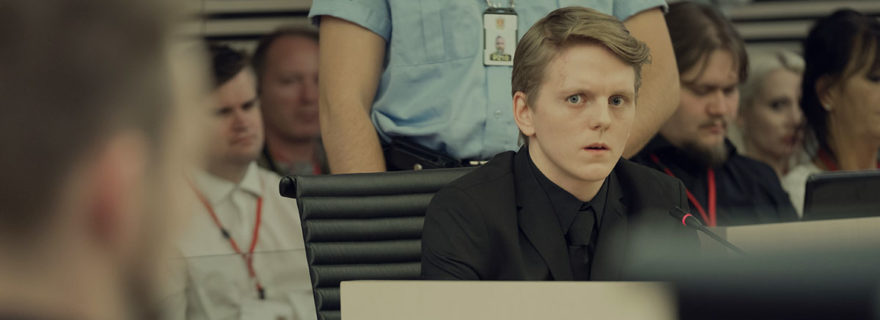22 July
Movie Rating:
4
Paul Greengrass might have made his mark on blockbuster cinema with the jittery, politicized uneasiness that he brought to the spy genre via the Jason Bourne franchise, but thankfully he used those successes as a means of continuing the unique brand of filmmaking he actually specializes in.
Movies like United 93, Captain Phillips, and Bloody Sunday reveal the real Greengrass, a director specializing in a style of storytelling somewhere between documentary, fiction, reporting, and thriller. These films are as tense and visceral as any of his blockbusters, but dedicated to probing genuine tragedies with a sense of harsh realism, egalitarian character study, and pointed politics in a manner unlike anyone else. 22 July is Greengrass’ latest entry in this strain of his career, and it’s so pointed in subject matter that many viewers will find it too much to take.
The subject of Greengrass’ jittery cameras this time is the 2011 massacre in Norway that dominated news cycles for a few months. Far Right terrorist Anders Behring Breivik detonated a car bomb in the middle of Oslo and then descended on the Norwegian Socialist party’s annual summer camp populated primarily by teenagers. All told, 77 people lost their lives that day and Breivik got an international spotlight to spout out his horrific agenda. It’s a devastating tale, some might say one that isn’t necessary to be relived through a film, but Greengrass has a clear, concise, and cutting purpose in mind for it. The result is guaranteed to make brains and hearts turn along with stomachs.
The movie opens with the attacks – an almost indescribably harrowing 30 minutes as Greengrass’ handheld documentary-style cameras rove between the horrific events. To call it devastating would be a profound understatement. It’s one of the most difficult pieces of film to endure that Greengrass has ever created. While previous Greengrass docu-horrors have focused exclusively on the mass tragedies he’s presenting, this time the filmmaker spends the bulk of the time exploring the massacre. There’s no single protagonist, but two characters emerge who come close.
Anders Danielsen Lie plays Breivik as a coldly detached and calculated sociopath all the more frightening because his plan is so carefully thought-out. Through his trial process, a clear political motive and message emerges that is deeply chilling to watch as it’s so clearly rooted in the politics that would become the alt-right movement that has slowly slithered its way into a variety of European countries and America in ways that he predicted. On the other side of things, Jonas Strand Gravli plays an idealistic teen who was a victim of the attacks and not only survived a horrific series of injuries, but found the strength to heal and confront his attacker in court. His performance is just as strong from the other end. Alongside subplots involving the Prime Minister and Breivik’s court-appointed attorney is woven a story about how these sort of tragedies and ideologies can still be overcome.
What emerges is both another of Paul Greengrass’ harrowing and pointed docudramas as well as a carefully crafted polemic about the current state of the world and how to fight back without violence or vengeance. It’s an oddly hopeful film that offers a certain sense of catharsis amidst the horrors.
It goes without saying that the film is impeccably crafted on a technical and dramatic level. Greengrass long ago proved himself to be a master filmmaker. However, the way in which he’s able to create such a cohesive political statement about larger issues without them feeling forced onto a meticulously researched and executed telling of true events makes it cut even deeper. Many viewers won’t even be able to stomach the thought of sitting through such a harrowing cinematic experience, and that reaction is entirely justified. However, those willing to confront the difficult and stunning film that Paul Greengrass crafted will find themselves thinking about it for days. 22 July leaves a mark, but thankfully not without a sense of hope and a desire to overcome the seemingly impossible obstacles that fill all of our newsfeeds daily.





